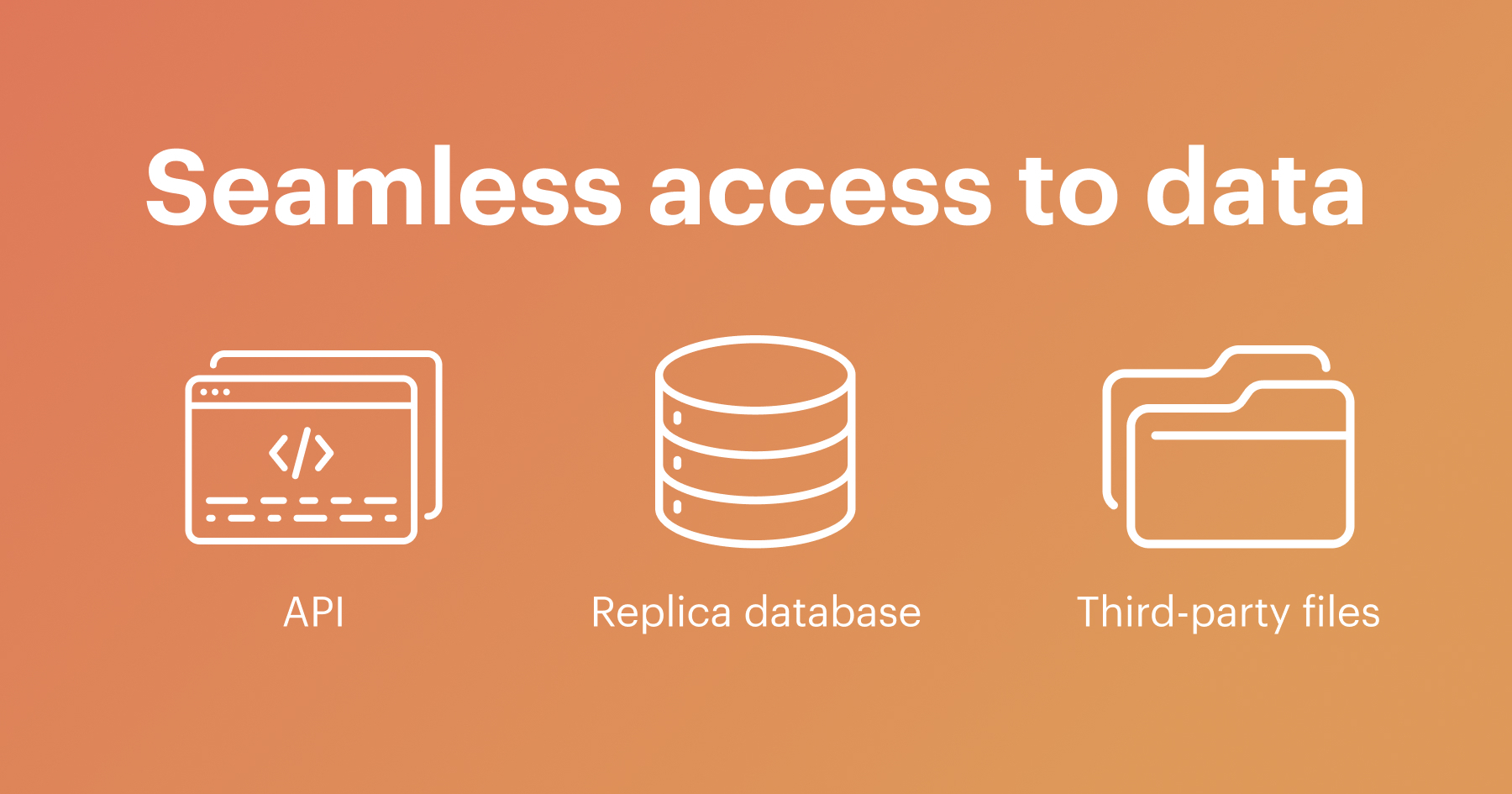Accessing your data with Peach

Prospective clients naturally ask a wide range of questions about our platform’s capabilities and features during the course of their evaluation. One theme we hear often is the need for ready access to data—whether for real-time actions, analytics, or investor and credit reporting.
In today’s world—where loan management systems are more nimble than ever—ready access to data can be a competitive advantage, helping lenders quickly assess portfolio performance and hone product-market fit. Additionally, the importance of clean and precise data from a compliance perspective has never been greater.
No matter your unique data access, analytics, and reporting needs, our underlying philosophy at Peach is that the data belongs to you. In other words, it’s our responsibility to ensure you have seamless access to your data when and where you need it. We’ve architected our platform from the very beginning to give you maximum flexibility in how you access data for various use cases.
There are three main ways our clients access their data.
Method 1: Direct API access
Peach is an API-first platform, so all your data is available via real-time API endpoints. The APIs available to our clients are the same ones we build on internally, so you can expect highly performant API access to our system. There are no hidden APIs.
API calls are suitable for things like getting loan balances for real-time decisioning and taking actions on loans and borrowers. Webhooks provide near-real-time push updates, while Events are suitable for information pulls.
API access, however, is not designed for operational reporting and analytics. That’s where the replica database comes in.
Method 2: Replica database
Peach provides a read-only replica of all important database tables. Part of the replica is a powerful snapshots table that provides a daily summary of all loans on a granular level (e.g., balances by accounting bucket). The replica is designed for operations, analytics, auditing, and financial accounting reporting and reconciliation.
Peach also provides an SQL analytics tool called Redash for custom reporting on the replica database. Alternatively, clients can ETL data into their data lake/warehouse (e.g., Snowflake, Fivetran, BigQuery, Redshift).
Not all data is created equal. We’ve thoughtfully handled PII, external IDs, rounding, dates and cutoff times, and data mapping. Ask your Peach team for more information about why our clients love Peach for their data and reporting needs.
Method 3: Third-party files
Peach provides a variety of configurable third-party reporting file types. These include the following:
Loan tapes & payment tapes – Clients can create a variety of loan tapes and payment tapes for recurring reporting to both sponsor banks and third-party capital providers. Tape types are configurable with field mapping to partner/investor schemas. Files can be sent via SFTP to you and/or to each investor in CSV format daily or monthly. Tapes can also include custom metadata you provide.
Metro 2® files – Metro 2 files are generated by Peach and are sent to you via SFTP. These files are compliant with credit furnishing standards as supported by the three major bureaus—Experian, Equifax, and TransUnion.
Statements – Peach can generate periodic statements for both lines of credit and installment programs. Statement frequency and data is fully configurable at the product-type level. Statements can be generated and delivered both electronically and via physical mail. Clients can also access raw statement data via API to generate statements directly.
A powerful feature of Peach’s platform is our proprietary Loan Replay™ capability. Retroactive changes to loans affect each of the third-party files above in different ways. Ask your Peach team for more information about how Peach’s system handles retroactive changes.